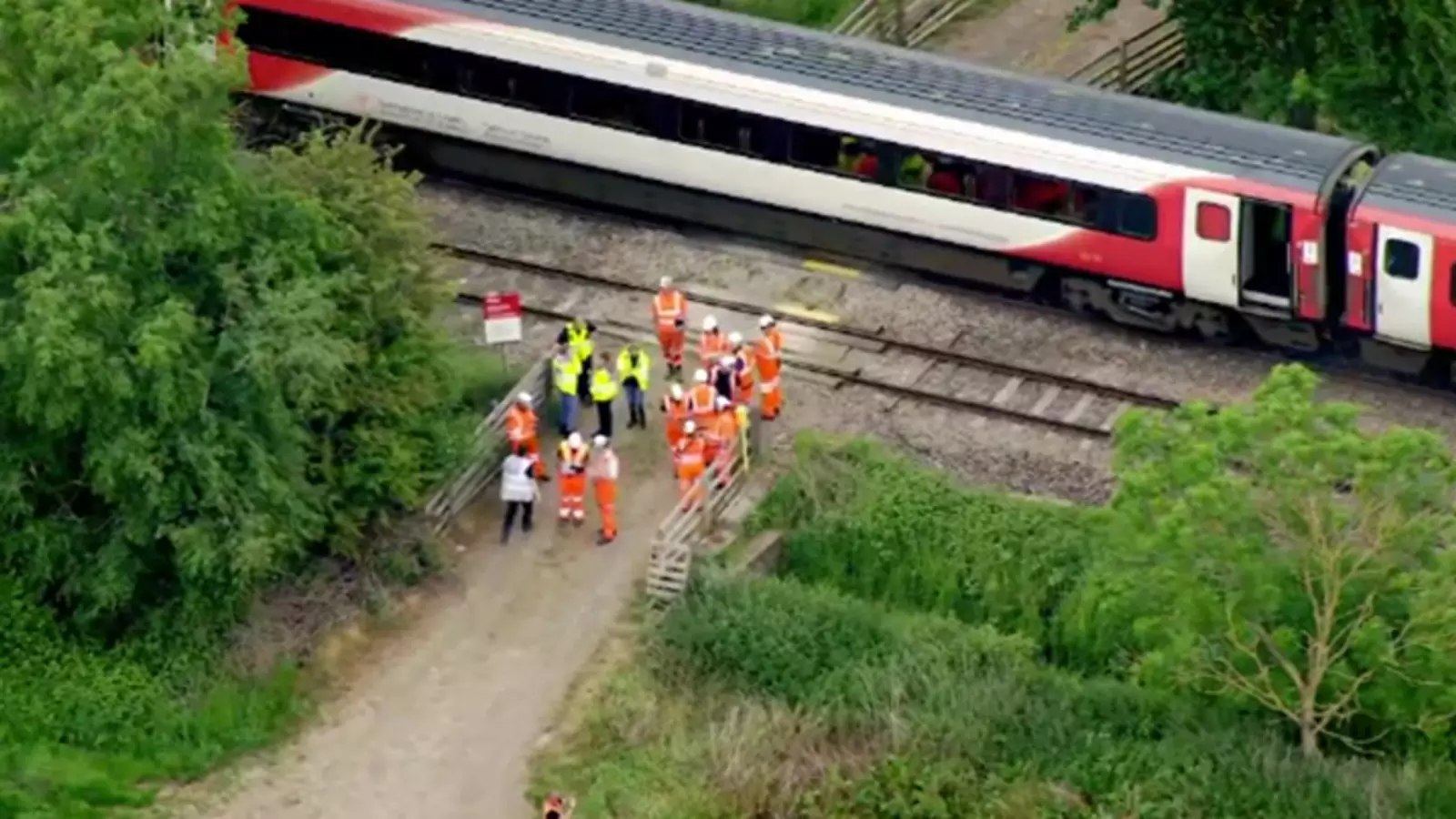In a shocking turn of events, a train collided with an agricultural trailer at a level crossing in Herefordshire, injuring over a dozen individuals. The incident, which occurred at 10:40 AM on a Thursday, has raised serious alarms regarding safety protocols at user-operated crossings. While emergency services rushed to the scene, the aftermath has left many questioning the efficacy of existing measures meant to protect both railway and road users.
A 32-year-old man from Bromyard has been arrested on suspicion of endangering railway safety—a critical point that underlines the human element in this tragic episode. The fact that a man was airlifted to the hospital, while several others suffered non-life-threatening injuries, highlights the potential for catastrophe when safety regulations are not stringently followed. It is troubling that a routine commute can turn into a life-altering event due to lapses in judgment or adherence to safety protocols.
User-Operated Crossings: A Recipe for Disaster?
The role of user-operated crossings cannot be overstated in this incident. Designed to allow local farmers and drivers to cross railway lines, these systems leave much to chance, depending heavily on the experience and vigilance of everyday users. The Rail Accident Investigation Branch (RAIB) has dispatched a team to gather evidence, a necessary step for identifying systemic flaws. This brings into focus a critical question: are we placing the onus of safety on individuals rather than implementing robust infrastructure to protect everyone?
While some might argue that the responsibility lies with the operators of agricultural vehicles, the railway authorities also share a significant proportion of the blame. It is imperative to evaluate whether adequate training and warnings are offered to users of these crossings. The transport authorities must not only react to accidents but must implement proactive measures to prevent such collisions from occurring in the first place.
Transportation Chaos: The Ripple Effect
The collision has had a cascading effect on transportation, disrupting services between Hereford and Craven Arms. Passengers were caught in the crossfire of unanticipated delays and route changes, showcasing an inadequate response mechanism. While alternative transport has been arranged, the chaos of lost time and plans serves as a reminder of how interconnected our transport systems are and the fragility of their operations. Those who depend on punctual rail services are left frustrated and inconvenienced—exemplifying further the far-reaching impacts of a single accident.
Moreover, the engaging nature of this incident could spur public debate on better safety mechanisms. Should user crossings be banished altogether in favor of automated solutions? Should the railway services be held accountable for the training of users at these crossings? In an era where technology offers us the means to create safer and more efficient systems, it is bewildering that human error is still allowed to dominate.
This incident is more than just a story of injuries and arrests; it is a stark reminder of our collective responsibility to foster safer transportation systems. The return to normalcy at these crossings should come with introspection and reform. The intensity of this tragedy compels us to think critically about regulation, enforcement, and, ultimately, human life. In an age defined by progress, it is disheartening to witness a failure that could so easily have been avoided.


Leave a Reply